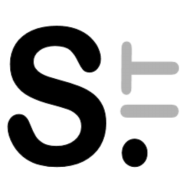-
No more new contents until AI is properly regulated
I won’t add new contents to this site until AI is properly regulated. I won’t go as far as removing old contents – for now. AI is now fully in the phase that Shoshana Zuboff called the disposession cycle in her “The age of surveillnace capitalism”. I’m not going to feed the AI beast.
-
How to switch to Microsoft 365 Classic and avoid CoPilot price increase
Microsoft is being forcing users into the new Microsoft 365 + CoPilot subscription. That means a 40% price increase for the Microsoft 365 Personal subscription, for example (here, from 69€ to 99€). If you have no use for CoPilot, and find it an annoyance only, there is the option to switch to the Classic subscription,…
-
Warning: Microsoft is attempting to take control of your email
Microsoft is going to deploy the “New Outlook” with Windows February security update. Why Microsoft is going to deploy an application with an OS security update? Because the “New Outlook” gives Microsoft full access to your email, whatever email service you are using. “New Outook” is not a full email client. It doesn’t “speak” SMTP,…
-
Logitech software still too low quality
Years ago I wrote about the Logitech’s LVUSBSta.sys driver that corrupted the USB and audio stack when installed. For a long time, I no longer bought Logitech because even if the hardware is mostly good, software was not. For a while I bought Microsoft devices, which usually worked without issues. Now Microsoft got out from…
-
DHCP, VLANs and subnets in home networks
In the article VLANs for home networks I wrote about how VLANs and subnets can improve network security by creating different segments, usually associated with a subnet. With multiple subnets, assigning addresses in each subnet via DHCP becomes more complex. DHCP IPv4 uses broadcast packets to ask for an IP address. VLANs create separate broadcast…
